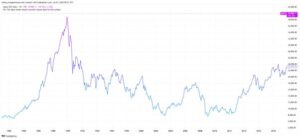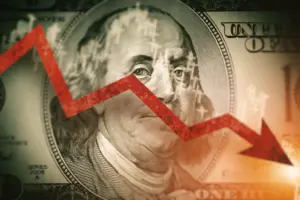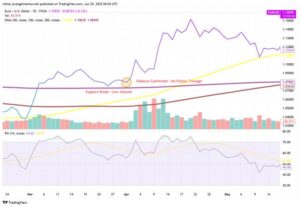Gold Prices Move Higher
The gold prices came back to recover losses on Monday, backed by the recently released disappointing US employment reports and the risk-off sentiment, further lubricating the yellow metal. Now, the market remains keenly focused on the release of the US ISM Services PMI for July due on the cards later today, which might open up fresh drivers for the market.
Softer US Dollar and Treasury Yields Supportive of Gold
The price for the gold firmed during the Monday session as the dollar softened. This is in line with markets continuing to digest the dovish stance of the Federal Open Market Committee and the weaker-than-anticipated US employment report. US Treasury bond yields, together with the US dollar, are likely to remain under pressure and provide a tailwind for gold prices. Increased geopolitical tensions in the Middle East will likely further support traditional safe-haven assets like gold.
Focus on US ISM Services PMI
A look for the fresh impetus into the US ISM Services Purchasing Managers Index. The Services PMI is seen growing to 51.0 in July from 48.8 in June. Better than forecasted results on the very same should strengthen the US dollar and cap the rise of gold prices.
Gold inched higher as the US jobs report was weaker and geopolitical risks rose. US Secretary of State Tony Blinken has alerted G7 allies that Iran and Hezbollah could attack Israel as soon as Monday. President Joe Biden will chair a meeting of his National Security Council on Monday to discuss the situation in the Middle East.
Weak US Jobs Data Fuels Fed Rate Cut Speculation
The US Nonfarm Payrolls rose 114K in July, lower than the down-revised reading of 179K in June, and lower than the consensus reading of 175K. Further, the US jobless rate climbed to 4.3% in July from 4.1% in June, for the first time since November last year. Average hourly earnings increased just 0.2% month-on-month, short of the consensus expectation of 0.3%.
The market is currently pricing in a roughly 74% probability of a 50 basis-point reduction by the Fed at next month's meeting—September FOMC. On Friday, Chicago Federal Reserve Bank President Austan Goolsbee said the Fed should not overreact to any single month's number, with the US NFP result lower than expected, but both the inflation and jobs data have made substantial headway over the past couple of months.
Gold Price Movements and Market Reactions
Weak economic data made the previous week bring up gold prices to a high of $2,477 an ounce, before losing to $2,413. Cuts in Fed rates this September are building stronger speculations, in line with the weak economic data that also involved disappointing Nonfarm Payrolls, an increasing number of unemployed people, and a declining average hourly earnings. This speculative inflation brought down the US 10-year Treasury yield to 3.815%.
This, according to some traders, weighed on prices of gold after the North American session hit two-week highs of $2,477. The figures suggested that the United States' jobs market is finally buckling under higher borrowing costs set by the Federal Reserve as the number of Americans applying to work dropped. It boosted prices of gold, which rallied over 1% before pulling back to trade around $2,413.
Wall Street suffered large losses, as most of the equity indices dropped at least 2.20% after the US Bureau of Labor Statistics (BLS) published the July Nonfarm Payrolls figure, which did not meet expectations and the June data was revised down. To add to this was the lousy Manufacturing PMI report from the Institute of Supply Management (ISM) Thursday, with traders now trying to digest those figures, raising the odds that the US Federal Reserve might cut interest rates at the upcoming September meeting.
Impact on US Treasury Yields and Bullion Prices
Following the payroll numbers, US Treasury yields plunged sharply; the benchmark US 10-year note slid 16 basis points to 3.815%, the lowest level since March, fueling even higher the bullion prices.
Possible Rate Cut by the Fed in September
The latest set of US data helps justify Fed Chairman Jerome Powell's comment in terms of a possible cut to the federal fund rates this September, provided America's economic performance continues to lose heat. Given inflation is trending in moderation and the employment data is beginning to soften, it further augments the likelihood of a rate cut and, for sure, further support for the gold price.
Conclusion
Amid investors' rough sailing in the economic landscape, gold prices are likely to be propelled by US economic data and geopolitical events. The next move for gold will strongly depend on the upcoming US ISM Services PMI, as strong data could further strengthen the US dollar, thus limiting the upside for the yellow metal. Geopolitical tensions and market reactions to employment data will keep the precious metal continuing at the vanguard as a safe haven asset.





